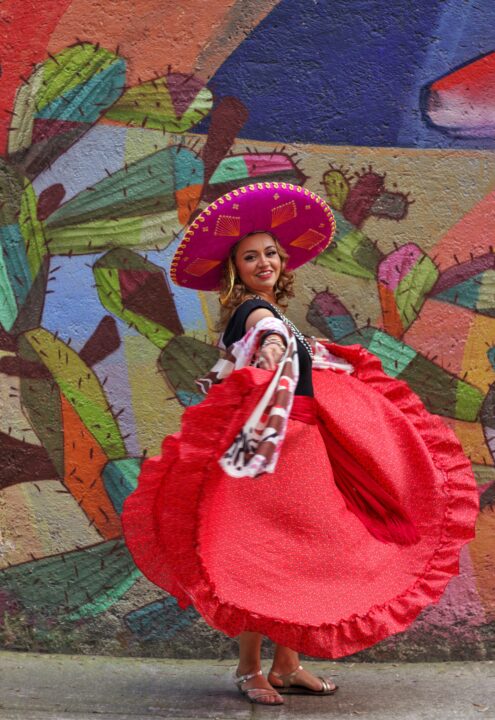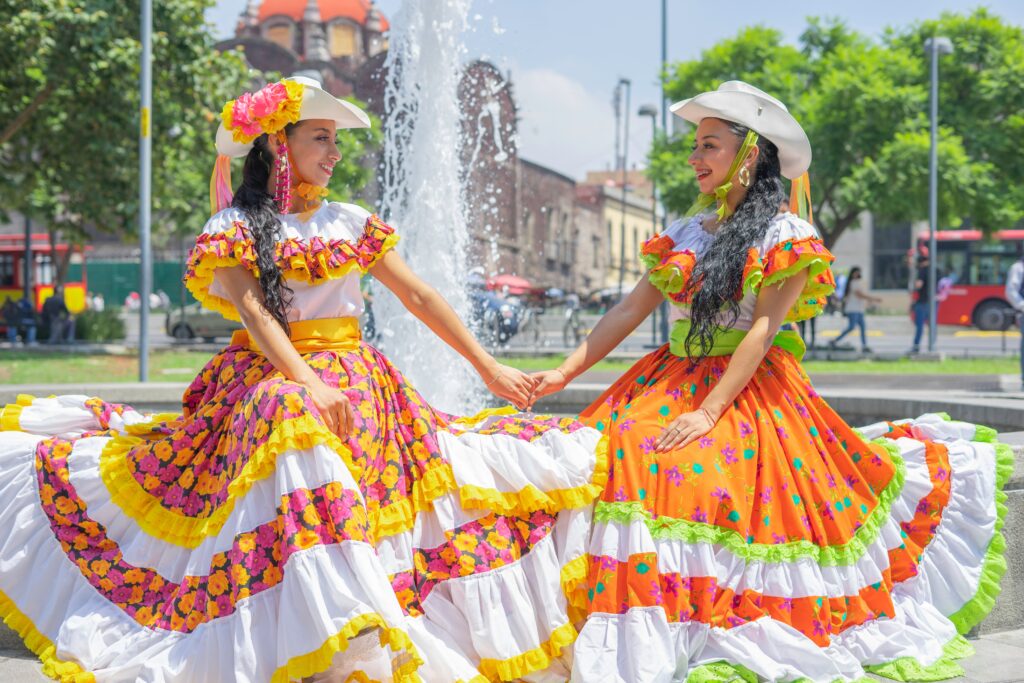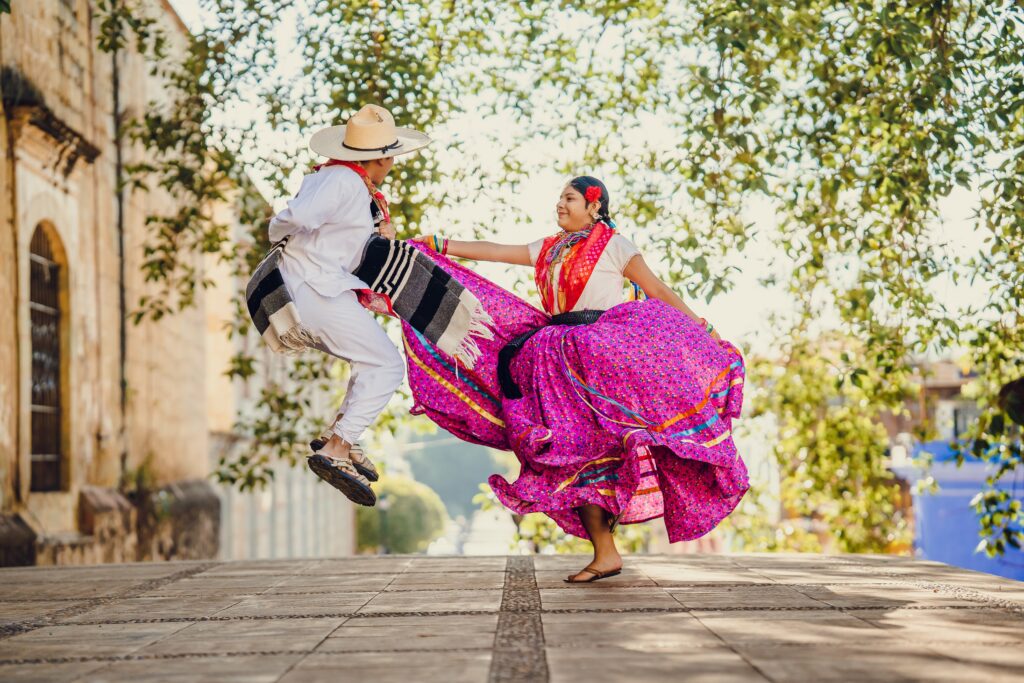Venezuela has always been known for its exquisite fashion choices, composed of various colors, sizes, and fabrics that are arranged for both men and women, boys and girls. Venezuelan fashion consists of an array of beautiful traditional clothing for various dances and modern-day clothing used for everyday use.
Each country or region within a country has a costume—traditional clothing that integrates their folklore—that is, the expression of culture that, of course, also includes stories and legends, music, material culture, and oral traditions.
The typical costumes of a country are influenced by history, geography, ethnic group, or climate.
Origin
Venezuela is one of the countries comprising South America, with a continental part and a small insular part in the Caribbean Sea and the Atlantic Ocean. It is home to the world’s highest waterfall.
Spain, France, and several other countries and cultures highly influenced Venezuelan traditional clothing. This was during the Spanish conquest, years after Christopher Columbus’ accidental discovery of the Americas in 1492. Because of this age of conquest, much of Venezuela’s traditional clothing closely resembles Spanish traditional clothing. Many immigrants and Spanish conquerors have greatly influenced Venezuela’s traditional dress.
Venezuela has a few political-administrative regions: the Andes, the Capital, the Central Zone, the Llanos, the Central-Western, Zuliana, the Los Andes, the Northeast, Guyana, and the Insular. As we continue the article, we’ll delve deeper into Venezuela’s traditional clothing worn in the various regions.
Popularly Named Venezuelan Traditional Clothing
Liqui Liqui
The liqui liqui is recognized as the masculine garment that identifies folklore and national tradition. It is a typical suit consisting of a straight jacket with long sleeves and a high, closed neck. It has pockets on both sides at chest level and the bottom, and it closes at the front with a row of five or six buttons.
The trousers are straight and made of the same fabric as the jacket, which is generally linen. The traditional colors of this piece are black and white. It was used both for daily work in the field and for gala events. The outfit is completed with a black “hair and’ guama ”hat and shoes or boots of the same color.
Venezuelan Traditional Clothing Worn in Different Regions
1. Capital Region
-

viridiana rivera, pexels, 13202375.jpg
It comprises the Capital District, where the capital city of Caracas is located, and the states of Miranda and Vargas. It is the most populated region of the country and where the Spanish whites, the black slaves, and the Creoles settled during the colony, leaving a marked influence on their customs.
The people of Caracas assumed the traditional dress of the “old lady,” reminiscent of the women of European high society residing in the country. It is a flowy dress with exquisite silk and lace fabrics. Under the dress are several layers of fabric or iron frames to give it volume. The elaborate outfit is completed by roomy hats, gloves, and a soft fabric umbrella to protect against the tropical sun.
Men wear trouser suits and jackets made of linen or cotton, usually in light colors. Formerly, they could wear a tie or bowtie and a straw hat to complete the picture. Some used a cane more as an accessory that added elegance than out of a physical necessity.
2. Los Llanos Region
The Llanera region, comprised of the states of Apure, Barinas, and Guárico, is the cradle of the Llanero attire, which also identifies the entire country. Here the joropo is danced, and it is done using liqui liqui for men and wide skirts for women.
According to the occasion, the suits are usually more elegant or casual. The liqui liqui is made of linen with striking buttons, black leather boots, a “pelo e’ guama” hat, and a riding harness for formal events.
To make women’s clothing more formal, the length of the skirt is extended, and the volume of the dress is increased. The sleeves of the blouses are elongated and have bright-colored ribbons. On the head, they use showy flower arrangements or a simple cayenne flower.
3. Andes Region
-

jhovani morales, pexels, 13401919.jpg
The Andean region is characterized by its high mountain range and the coldest temperatures in the country. It comprises the states of Táchira, Mérida, and Trujillo. The geographical aspect is decisive in the typical clothing of this area. The men wear light-colored cotton or linen pants and shirts, such as cream or white. To protect themselves from the cold, the indicated piece was a ruana hand-woven with raw sheep’s wool, weighing between 3 and 7 kilos.
The ladies wore wide and long skirts, and underneath, they wore long underskirts of unicolor fabrics to help warm the legs, preferably black. They also wore a long-sleeved white blouse and a cotton or linen jacket to ward off the cold.
4. Island Region
This region includes Nueva Esparta State and the Federal Dependencies (Caribbean Islands). The typical costume for women is one piece; in other words, the blouse and the skirt are attached. It consists of a broad, multi-story skirt that falls to the ankle.
It is made with seven rods of flower fabric with a light or red background. A ribbon or lace is placed over the seam of each floor. The blouse has three-quarter sleeves, a high neck, and is adorned with ribbons and buttons in the same color as the skirt at the back.
The man wears white trousers rolled up at the middle of the leg, combined with a white or red collarless shirt. Sometimes, the pants are black combined with a white shirt. Other times they wear khaki suits with a loose shirt over the pants.
5. Guayana Region
This region comprises the states of Amazonas, Bolívar, and Delta Amacuro. His most typical costume is that of an Amazon. The women wear a colorful and floral skirt that is worn mid-leg and is combined with a white blouse, indigenous belts, and necklaces.
The typical men’s wardrobe consists of white pants and a colored shirt that is adorned with indigenous necklaces that are also very colorful. In some indigenous tribes, the guayuco is still used and the torso is naked; this is another very representative regional wardrobe.
6. Central Western Region
This region comprises the Falcón, Lara, Portuguesa, and Yaracuy states. Each of these states has a very rich folklore, which is why the typical costumes are also varied. In Falcón, the typical suit for men is khaki pants with white flannel and a wide-brimmed cane hat. The women wear a flowery skirt combined with a high, light-colored blouse, similar to the costume used to dance joropo.
The typical costume of the Lara state for men also consists of khaki pants with white flannel, a belt, and a cane (straw) hat. The women wear a long skirt combined with a white blouse, quite similar to the plain suit. In general, this wardrobe is used to perform the typical Larense dance of the tamunangue.
7. Northeast Region
It is made up of the states of Anzoátegui, Monagas, and Sucre. The typical Anzoátegui costume is the liqui liqui with a “hair and guama” hat for men and a wide, flowered skirt with a low-cut light-colored blouse for women.
In Monagas, the typical costume for women consists of a dress with a wide skirt that falls to the ankles, with very bright and striking colors; currently, a midi skirt with wide lace is also used. The blouse is white with a low neckline and short sleeves with grommets. Women often wear loose hair adorned with a flower. They wear sandals or espadrilles.
The man wears white trousers that are rolled up at the mid-leg. Combine it with a white or red collarless shirt or black pants with a white shirt. The preferred hat is the “pelo e ‘guama”.
In the state of Sucre, women wear a wide flowered skirt with flats that fall to the ankle. It is made with seven rods of light or red background cloth. The blouse has three-quarter sleeves with a high neck, which is adorned with ribbons and is buttoned at the back.
8. Central region
This region is made up of the states of Aragua, Carabobo, Cojedes, and Guárico. In Aragua, the typical costume for men is white pants and a shirt with a red scarf around the neck, a “hair and a’ guama “hat, and espadrilles. The one for women consists of a wide floral skirt combined with a white blouse.
In the state of Carabobo, the typical costume is the four-pocket liqui liqui with espadrilles and a cogollo hat (cane or straw), or “pêlo é guamá”. For women, it consists of a wide skirt of flowered fabric and lace with a white blouse.
The typical costume of Cojedes is the liqui liqui for men, accompanied by espadrilles and a bud hat, or “pelo e’ guama”. The women wear flower-patterned skirts and short-sleeved lace blouses. The typical wardrobe of the Guarico state consists of a wide skirt with floors to the ankle and a three-quarter blouse and high neck for women. It is adorned with ribbons and is buttoned at the back.
9. Zuliana Region
In the state of Zulia, the typical costume has roots from the indigenous people that occupied and still occupy the territory of Guajira, on both sides of the embrace with Colombia. The women’s dress is a guajira blanket, a kind of straight and wide cotton robe, in striking colors and patterns. Sometimes the neck is round, sometimes it is V-shaped, but regardless of that detail, they all have a drawstring at the waist.
10. Insular region
The typical costume of the women who live in the insular region of Colombia is characterized by having a white blouse, a high neck, and long sleeves. This blouse can be trimmed to match a traditional skirt that is worn at the waist and covers the hips and legs to the ankles.
In conclusion, the uniqueness of Venezuela’s traditional clothing has gained the most titles in the big four international beauty pageants, with 23 victories and an outstanding record of placements at Miss Universe, Miss World, Miss International, and Miss Earth, considered the most important pageants in the world.
Under the direction of Osmel Sousa, Venezuela has accumulated more international pageant titles than any other country, including seven Miss Universe winners, six Miss World winners, eight Miss International winners, and one Miss Earth winner. Wearing traditional clothes is a way of letting the world know who you are without having to say it. Venezuela’s traditional clothing will forever remain one to be loved by many.





